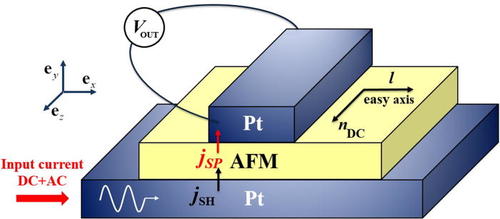
A concept of an electrically tunable resonance detector of THz-frequency signals based on an antiferromagnetic/heavy metal (AFM/HM) heterostructureis proposed. The conversion of a THz-frequency input signal into DC voltage is done using the inverse spin Hall effect in an (AFM/HM) bilayer. An additional bias DC in the HM layer can be used to vary the effective anisotropy of the AFM and, therefore, to tune the antiferromagnetic resonance (AFMR) frequency. The proposed AFM/HM heterostructure works as a resonance-type quadratic detector, which can be tuned by the bias current in the range of at least 10% of the AFMR frequency, and our estimations show that the sensitivity of this detector could be comparable to that of modern detectors based on the Schottky, Gunn, or graphene-based diodes. This work has been published in Applied Physics Letters and can be accessed here.
